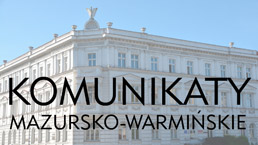Current issue
Online first
Special issues
Archive
About the Journal
Editorial Board
Editorial Council
Reviewers
Editorial guidelines
Publication ethics
Guidelines for reviewing
Remarks on “ghostwriting”
Copyrights and Open Access rule
GDPR Privacy Notice – for the authors of articles sent for publication in the "Komunikaty Mazursko-Warmińskie ("Masuro-Warmian Bulletin")
Contact
Price list
The Upper Silesia plebiscite 20th March 1921, Origin – preparations – results – evaluation
1
Instytut Śląski, Polska
Submission date: 2022-06-06
Final revision date: 2022-08-04
Acceptance date: 2022-08-12
Online publication date: 2022-08-18
Publication date: 2022-08-18
KMW 2022;317(2):171-195
KEYWORDS
Upper SilesiaPolish-German relationsVersailles orderhistory of Poland 1918-1922Upper Silesian plebiscite
TOPICS
ABSTRACT
The article analyses the socio-political situation in Prussian Upper Silesia (administratively the Opole region/ plebiscite area) in the period of autumn 1918. - May 1922. The region belonged to the typical regions of Central and Eastern Europe with a mixed national and religious population and loyalties running sometimes backwards from the ethnic equipment. Although statistically it was dominated by a Slavic/Polish-speaking population, politically it was dominated by the German Catholic Centre Party before the war. It was distinguished by its economic potential, as the Upper Silesian Industrial District was one of the largest centers of heavy industry in Europe. The plebiscite established by the Treaty of Versailles, which was to decide on its nationality, took place on March 20, 1921. After an armed attempt at a fait accompli by the Polish side, the plebiscite area was finally divided on a national basis by a decision of the Council of Ambassadors.
REFERENCES (38)
1.
Abrahamczik Eduard, Die oberschlesische Frage in Versailles. Geschichte des Artikels 88, Düsseldorf 1937.
2.
"Aby utrzymać porządek”. Raporty wojsk francuskich z okresu II powstania śląskiego (lipiec–wrzesień 1920), Bębnik Grzegorz, Rosenbaum Sebastian (eds.), Katowice–Warszawa 2020.
4.
Brożek Andrzej, Miejsce ziem śląskich w polityce środkowoeuropejskiej po I wojnie światowej (1918–1921), „Dzieje Najnowsze” 1970, nr 1.
5.
Deutschland und das Recht auf Selbstbestimmung nach dem Ersten Weltkrieg. Probleme der Volksabstimmungen im Osten (1918–1922), Breyer Richard (Hrsg.), Bonn 1985.
6.
Dokumente zur italienischen Politik in der oberschlesischen Frage 1919–1921, Kiesewetter Andreas (Hrsg.), Würzburg 2001.
7.
Eichner Karsten, Briten, Franzosen und Italiener in Oberschlesien 1920–1922. Die Interalliierte Regierungs- und Plebiszitkommission im Spiegel der britischen Akten, St. Katharinien 2002.
9.
Gerwath Robert, Pokonani. Dlaczego pierwsza wojna światowa się nie zakończyła (1917–1923), Poznań 2017.
10.
Grosch Waldemar, Deutsche und polnische Propaganda während der Volksabstimmung in Oberschlesien 1919–1921, Dortmund 2003.
12.
Hawranek Franciszek, Powstania śląskie i plebiscyt w dokumentach i pamiętnikach. Wybór tekstów, Opole 1980.
13.
Hitze Guido, Carl Ulitzka (1873–1953) oder Oberschlesien zwischen den Weltkriegen, Düsseldorf 2002.
14.
Hoefer Karl, Oberschlesien in der Aufstandszeit. 1918–1921. Erinnerungen und Dokumente, Berlin 1938.
15.
Jerczyński Dariusz, Historia narodu śląskiego, prawdziwe dzieje ziem śląskich od średniowiecza do progu trzeciego tysiąclecia, Zabrze 2003.
16.
Klein Edmund, Wybory komunalne na Górnym Śląsku 9 listopada 1919 r. a sprawa polska, „Studia Śląskie” 1962, t. 5, Opole.
17.
Klein Edmund, Rada Ludowa we Wrocławiu. Centralna Rada dla Prowincji Śląskiej, Wrocław 1976.
18.
Krasuski Jerzy, Stosunki polsko-niemieckie w latach 1919–1932, „Przegląd Zachodni” 1981, nr 1/2.
19.
Laubert Manfred, Die oberschlesische Volksbewegung. Beiträge zur Tätigkeit der Vereinigung Heimattreuer Oberschlesier 1918–1921, Breslau 1938.
21.
Linek Bernard, Początek rozpadu. Sytuacja społeczno-polityczna na Górnym Śląsku w pierwszych miesiącach po zakończeniu I wojny światowej (listopad 1918 r.–sierpień 1919 r.), „Studia Śląskie” 2019, t. 85, Opole.
22.
Malec-Masnyk Bożena, Plebiscyt na Górnym Śląsku (geneza i charakter), Opole 1989.
23.
Nipperdey Thomas, Deutsche Geschichte 1866–1918, Bd. 2, Machtstaat vor der Demokratie, München 1998.
24.
Nitsche Peter, Der Reichstag und die Festlegung der deutsch-polnischen Grenze nach dem Ersten Weltkrieg, „Historische Zeitschrift” 1973, Bd. 216, H. 1, München und Berlin.
25.
Schumann Wolfgang, Oberschlesien 1918/19. Vom gemeinsamen Kampf deutscher und polnischer Arbeiter, Berlin 1961.
26.
Słownik Powstań Śląskich, t. 1: I powstanie śląskie. Sierpień 1919, Fic Maciej, Kaczmarek Ryszard (eds.), Katowice 2019.
27.
Słownik Powstań Śląskich, t. 2: II powstanie śląskie. Sierpień 1920, Fic Maciej, Kaczmarek Ryszard (eds.), Katowice 2020.
28.
Słownik Powstań Śląskich, t. 3: III powstanie śląskie. Maj–lipiec 1921, Fic Maciej, Kaczmarek Ryszard (eds.), Katowice 2021.
29.
Sprawy polskie na konferencji pokojowej w Paryżu w 1919 r. Dokumenty i materiały, t. 1, Bierzanek Remigiusz, Kukułka Józef. (eds.), Warszawa 1965.
30.
Volksabstimmungen und andere Grenzlösungen nach dem ersten Weltkrieg, Fräss-Ehrfeld Claudia (Hg.), Klagenfurt 2020.
32.
Webersinn Gerhard, Die Provinz Oberschlesien. Ihre Entstehung und der Aufbau der Selbstverwaltung, „Jahrbuch der Schlesischen Friedrich-Wilhelm-Universität zu Breslau” 1969, Bd. 14.
33.
Weger Tobias, Großschlesisch? Großfriesisch? Großdeutsch! Ethnonationalismus in Schlesien und Friesland, 1918–1945, Oldenburg 2017.
34.
Wehowski Matthäus, Institution des Ausgleichs in einer umkämpften Region? Die Kreisbeiräte in Oberschlesien: September 1920–Mai 1921, „Studia Śląskie“ 2019, t. 84, Opole.
35.
Winkler Heinrich A., Długa droga na Zachód. Dzieje Niemiec, t. 1: 1806–1933, Wrocław 2007.
37.
Vogel Rudolf, Deutsche Presse und Propaganda des Abstimmungskampfes in Oberschlesien, Leipzig 1931.
38.
Źródła do dziejów powstań śląskich, Popiołek K. (ed.), t. 2: Styczeń – grudzień 1920, Tadeusz Jędruszczak i Zygmunt Kolankowski (eds.), Wrocław–Warszawa–Kraków 1970.
We process personal data collected when visiting the website. The function of obtaining information about users and their behavior is carried out by voluntarily entered information in forms and saving cookies in end devices. Data, including cookies, are used to provide services, improve the user experience and to analyze the traffic in accordance with the Privacy policy. Data are also collected and processed by Google Analytics tool (more).
You can change cookies settings in your browser. Restricted use of cookies in the browser configuration may affect some functionalities of the website.
You can change cookies settings in your browser. Restricted use of cookies in the browser configuration may affect some functionalities of the website.




